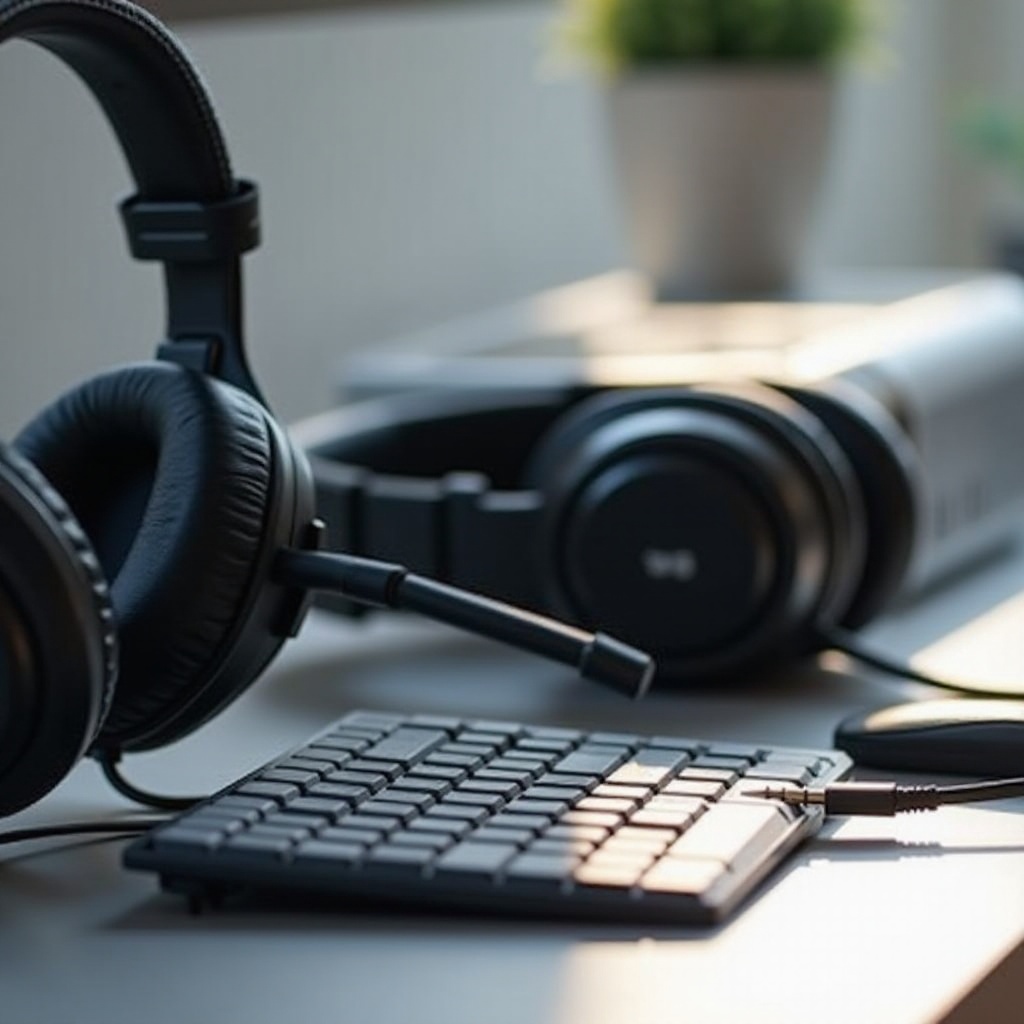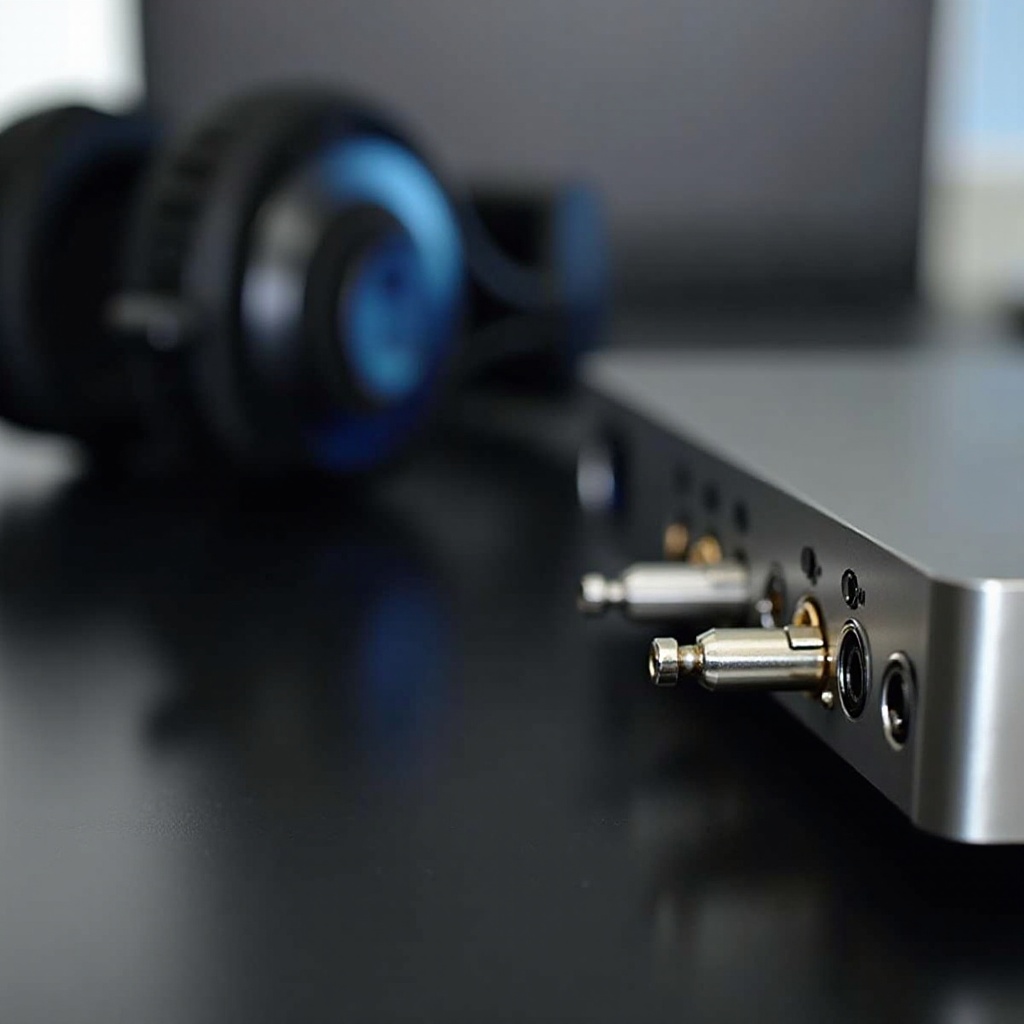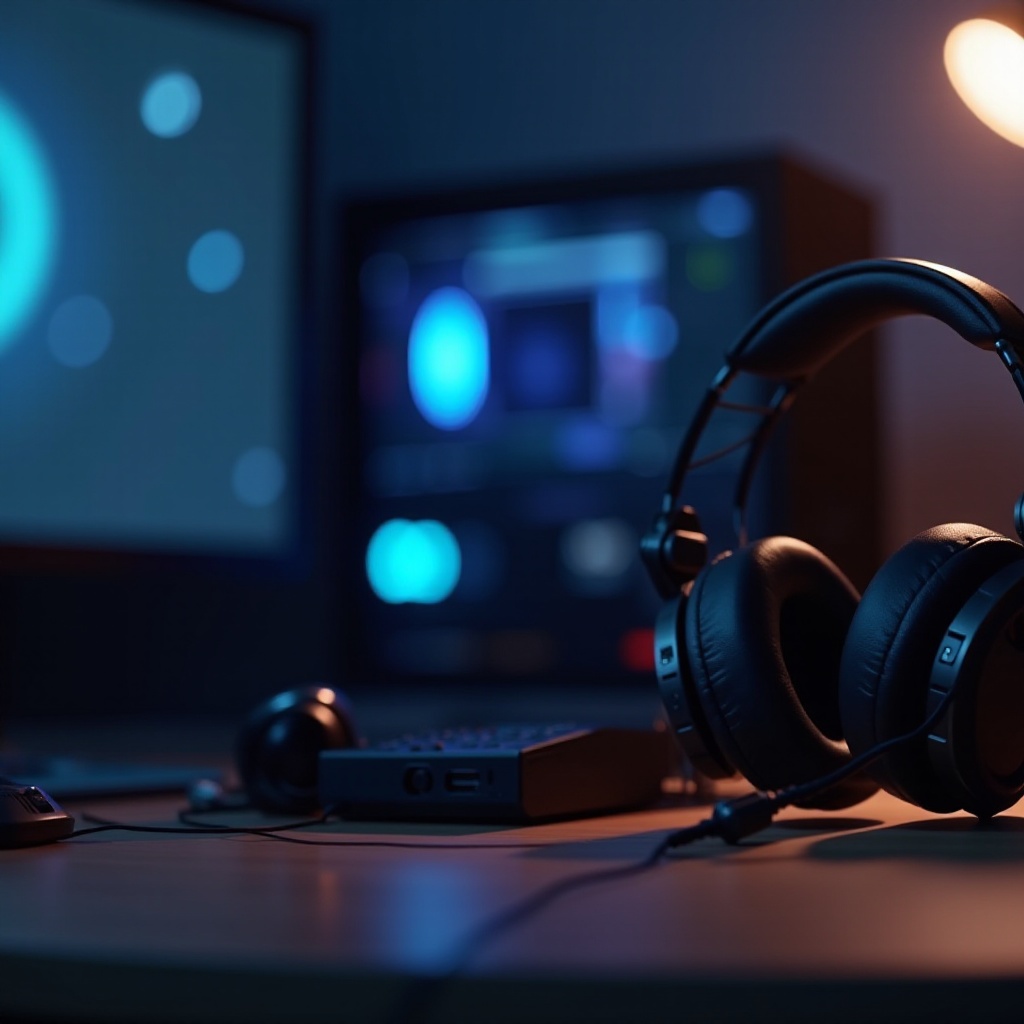Introduction
Deciding whether to use a headset or headphones jack on a PC amp can seem challenging. Your choice impacts sound quality, functionality, and overall user experience. This guide will help you understand the basics, different types of jacks and connectors, and how to connect each device to a PC amp. Additionally, we will explore the pros and cons of using headphones versus a headset and provide troubleshooting tips for common issues. By the end of this guide, you’ll be well-equipped to make an informed decision.

Headphones vs. Headsets: Understanding the Basics
Before diving into the specifics of jacks and connectors, it’s essential to understand the fundamental differences between headphones and headsets.
Headphones are designed primarily for audio playback. They come with two ear cups connected by a band and provide a high-quality listening experience. They don’t typically include a built-in microphone, making them suitable for activities like music listening, gaming, and watching movies.
Headsets, on the other hand, include both ear cups and a microphone. They’re a dual-function device allowing for both high-quality audio playback and voice communication. This makes headsets perfect for online gaming, video conferencing, and any activity requiring both audio input and output.
Understanding these basic differences sets the stage for choosing the right jack on your PC amp, whether you need just audio playback or both audio and communication capabilities.

Different Types of Jacks and Connectors
PC amps typically feature two main types of jacks: the headphone jack and the headset jack.
- Headphone Jack: This jack is designed exclusively for audio output. It powers the speakers in your headphones to deliver clear, refined sound.
- Headset Jack: This jack has an additional feature that accommodates a microphone. It supports both audio output and input, making it suitable for headsets.
Different connectors include:
– 3.5mm plug: Standard for most headphones and headsets.
– USB connector: Common in gaming headsets, providing power and audio data.
– ¼ inch (6.35mm) plug: Typically found in professional audio equipment.
Choosing the right connector and jack ensures you get the optimal performance from your headset or headphones.
Connecting Headphones to a PC Amp
Connecting your headphones to a PC amp is straightforward:
- Locate the headphone jack: Look for the dedicated headphone/output jack on your PC amp.
- Insert the plug: Ensure your headphones have a compatible connector, usually a 3.5mm plug, and insert it firmly into the jack.
- Adjust settings: Go into your PC’s sound settings, and select the headphones as the primary output device.
By following these steps, you can enjoy a high-fidelity audio experience with your headphones.
Connecting a Headset to a PC Amp
Connecting a headset is similar but involves an extra step:
- Identify the headset jack: Find the correct headset/input-output jack on your PC amp.
- Plug in the headset: Connect the 3.5mm or USB plug of your headset into the corresponding jack.
- Configure sound settings: Open your PC’s sound settings and select the headset as both the input and output device.
This setup allows you to use both speakers and the microphone for a comprehensive audio solution.
Pros and Cons: Headphones vs. Headset on PC Amps
When deciding between headphones and a headset on a PC amp, consider the following pros and cons:
Headphones Pros:
– Superior audio quality for listening.
– Typically more comfortable for extended use.
– Often come with noise-canceling features.
Headphones Cons:
– Lack a built-in microphone.
– Not ideal for communication requirements.
Headset Pros:
– Includes a built-in microphone for communication.
– Ideal for gamers and telecommuters.
– Often designed with features for better team communication.
Headset Cons:
– Might not match the pure audio quality of dedicated headphones.
– Can be bulkier or less comfortable for prolonged use.
Weighing these factors helps determine which option best suits your needs.

Common Issues and Troubleshooting
Even after proper setup, issues might arise with your headphone or headset connected to a PC amp. Common problems include:
- No sound output: Ensure the device is selected as the output/input device in PC settings. Check the connection and make sure the volume is up.
- Distorted sound: This might occur due to loose connections or outdated drivers. Re-check the connections and update your drivers.
- Microphone not working: Ensure the headset jack is used correctly, and the mic is enabled in the sound settings. Testing with another device helps rule out hardware faults.
Proper troubleshooting ensures you maintain optimal audio performance.
Conclusion
Selecting whether to use a headset or headphones jack on a PC amp depends on your needs. This guide has provided clarity on how each device functions, the types of jacks and connectors, and the steps for connection. Understanding the pros and cons, as well as common troubleshooting tips, helps you make an informed decision for the best audio experience.
Frequently Asked Questions
Can I use a headset jack for headphones on a PC amp?
Yes, you can use a headset jack for headphones on a PC amp. However, ensure you adjust the settings to recognize the headphones correctly.
Which jack offers better sound quality for PC amps?
Generally, the headphone jack may offer better sound quality for audio output. Headset jacks are versatile but might slightly compromise audio output for the microphone’s inclusion.
What should I do if there’s no sound from my headphones/headset?
First, check if the device is selected as the primary audio output/input device in your sound settings. Ensure the connections are secure and up-to-date drivers are installed. Additionally, try using the headphones or headset with another device to rule out hardware issues.